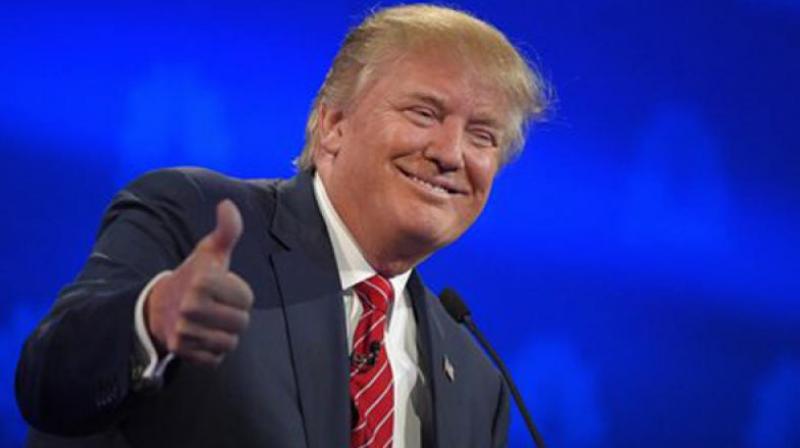US must talk to Tokyo, Seoul & Beijing on how to tackle Kim

Since the beginning of this year, North Korea’s supreme leader Kim Jong-un has surprised the world by his well-planned moves on the diplomatic chessboard. Mr Kim’s reconciliatory New Year message, participation in Pyeongchang Winter Olympics, acceptance of a summit meeting with South Korea and the United States and the March 26 summit with China’s President Xi Jinping within 90 days shows that he is in the driver’s seat as far as events on the Korean peninsula are concerned.
In all this, South Korea’s President Moon Jae-in has been an enthusiastic partner, and it’s reasonable to assume the two Koreas are now working together with close back-channel contacts to bring peace back on the peninsula. Their quick, well-coordinated moves have taken both the United States and China by surprise, and these two are now scrambling to retain their decisive role in resolving the Korean issue.
Clearly, two parallel processes are unfolding — the resumption of the “Sunshine Policy” agreed upon in 2007 by Kim Jong-Il, father of the present leader, and former President Roh Moo-hyun, political mentor of President Moon Jae-in. The other process is over the denuclearisation of the Korean peninsula in the context of North Korea’s claim last year that it had attained the missile and nuclear capacity to strike at the US mainland.
The two processes are somewhat interlinked but could move forward or backward independent of each other. This makes the task of US President Donald Trump very difficult when he sits across the table with Mr Kim in May 2018.
It’s noteworthy that while in official briefings by South Korea and China, the issue of denuclearisation has been specifically mentioned, this word has been conspicuously absent from reports of North Korean news agency KCNA. For instance, after the historic March 5 meeting of South Korean NSA Chung Eui-yong with Mr Kim, South Korea’s version of the talks said North Korea was willing to talk about getting rid of nuclear weapons if its security could be guaranteed.
It also said there would be no further missile tests by North Korea till diplomacy continues. But the KCNA reports were silent on both these subjects.
Similarly, after Mr Kim visit to Beijing on March 26-27, China’s Xinhua reported that Mr Kim said “the issue of denuclearisation can be resolved if the US and South Korea respond to our efforts with goodwill and create an atmosphere of peace and stability while taking progressive and synchronous measures for the realisation of peace”.
But the KCNA report avoided using the work “denuclearisation” and said: “The supreme leaders of the two countries exchanged in-depth opinions on significant agendas, including the development of amicable relations between DPRK and China and the issue of managing the Korean peninsula.” Further, KCNA said Mr Kim’s visit “became a crucial opportunity to expand and develop the friendly relationship between DPRK and China to a new and higher level.”
KCNA also reported Mr Kim said “the DPRK and China should consolidate the unity and cooperation between the two countries by strengthening strategic communication and strategic and tactical cooperation”.
Both the Xinhua and KCNA reports merit detailed scrutiny. The two sides have agreed to “strengthening strategic, communication and strategic and tactical cooperation”. The Xinhua statement requires South Korea and the US to take “progressive and synchronous measures for the realisation of peace”.
Mr Kim and Mr Xi have clearly discussed what Mr Kim would demand in his forthcoming summits with Mr Moon and Mr Trump. It would be fair to expect North Korea would demand the withdrawal of US troops from South Korea; and end to US-ROK military exercises; and redrawing the maritime boundary between North and South Korea along with easing of sanctions.
In return for any moves towards a freeze or reversal of its nuclear programme, Mr Kim is likely to ask for such “synchronous” steps which the US and South Korea would find impossible to concede.
Chinese state councillor Yang Jiechi visited Seoul to brief President Moon after the Kim-Xi meeting, and “various pending issues, including denuclearisation of the Korean peninsula”, were discussed. In contrast, no Chinese emissary was sent to Washington to brief President Trump.
President Trump tweeted after the Kim-Xi meeting: “Received message last night from Xi Jinping of China that his meeting with Kim Jong-un went very well and that Mr Kim looks forward to his meeting with me. In the meantime, and unfortunately, maximum sanctions and pressure must be maintained at all costs!”
The US needs to coordinate its North Korea policy at least with Seoul, Tokyo and China, if not with all other members of the Security Council.
But how will the Trump administration conduct normal diplomatic discourse with a weak state department and in the absence of a key interlocutor for Korea?
The coming weeks will witness some tough negotiations between North Korea and China on one side, and the US and South Korea on the other, over denuclearisation of the Korean peninsula. But irrespective of any progress on this, it is fair to expect that in their coming April 27 meeting, Mr Moon and Mr Kim will announce the resumption of an updated version of the erstwhile “Sunshine Policy”.

